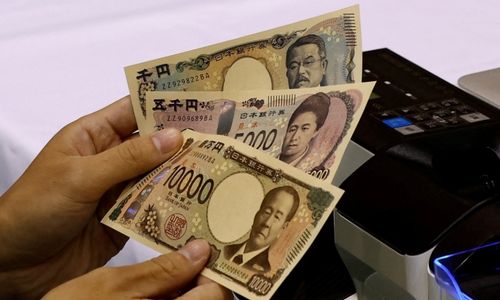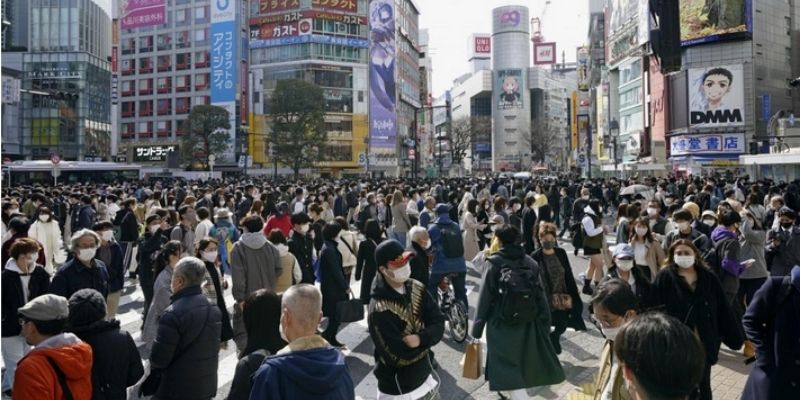Wondering what people earn in Japan? The median salary gives a clearer picture than broad averages, reflecting what most workers make. In 2025, this number helps highlight how everyday earners are coping with rising costs and shifting job markets. It also sheds light on what life is like for the average household in today’s Japan.
Understanding the Median Salary in Japan
As of 2025, the median monthly income in Japan is estimated at around ¥472,000. This number marks the middle point in the country’s income range, meaning half of the working population earns below it, and the other half earns more. Unlike average salary figures, which can be distorted by extremely high or low wages, the median offers a more balanced view of what people typically earn.
For comparison, the national average salary sits closer to ¥516,000, but that number is often pulled upward by high earners in industries like finance or tech. The median, on the other hand, reflects the earnings of the majority more accurately.
Income levels also vary by location. Larger cities such as Tokyo tend to have higher pay due to a dense concentration of major companies and global firms, while regional areas may offer lower salaries that align with their local cost of living. Understanding this benchmark can help job seekers in Japan make better financial plans, evaluate job offers more clearly, and set practical expectations when negotiating pay.

Japan median salary 2025 insights
Tokyo Median Income: Is It Really That High?
Tokyo consistently ranks as the highest-earning city in Japan, with the average monthly income reaching roughly ¥576,000 in 2025, significantly above the national figure of around ¥516,000. This pay gap is largely due to the city’s role as a major economic centre, home to global firms and well-paying sectors like tech, finance, and professional services. However, a higher salary doesn’t always equate to greater financial comfort. The cost of living in Tokyo, particularly rent, is among the steepest in the country. For example, a one-bedroom apartment in the city centre can easily exceed ¥150,000 per month. So while incomes in Tokyo appear attractive on paper, the elevated living expenses often reduce actual purchasing power. When comparing earnings across regions, it’s essential to weigh both income and daily costs to get a realistic picture of quality of life.

Tokyo salaries and high expenses
Median Salary vs. Living Costs in Major Cities
A high salary doesn’t always mean greater comfort, especially if living costs are equally high. The table below offers a quick look at median incomes and everyday expenses in major cities, giving a clearer picture of real-world affordability.
|
City |
Median Salary |
Cost of Living |
Summary Comment |
|
Tokyo |
¥472,000/month |
Very High |
Good earnings, yet living costs remain steep |
|
Osaka |
¥557,000/month |
High |
A sensible match between wages and daily spending |
|
Fukuoka |
Lower |
Low |
Affordable living suited to lower income |
|
Seattle |
$110,744/year |
Very High |
High salary but rising living expenses |
|
Houston |
$62,637/year |
Moderate |
Comfortable lifestyle with a mid-level income |
|
San Francisco |
High |
Very High |
Home ownership is difficult due to high costs |
|
Sydney |
AUD 103,000/year |
Very High |
Housing prices far exceed income levels |
|
Melbourne |
Lower |
High |
Costly but more accessible than Sydney |
While some cities offer impressive pay, rising living expenses can quickly eat into take-home value. In contrast, places with modest salaries but lower costs often provide better financial balance. In the end, it’s not just about what you earn, but how far it goes.
Income Gap and Regional Disparities in Japan
Japan continues to face widening income gaps and imbalanced regional growth, issues that have become more visible in recent decades. A key factor is the increasing divide between permanent and non-regular employment, with the latter earning considerably less and lacking long-term stability. The aging population adds another layer of complexity, particularly in rural areas where economic opportunities are shrinking. Gender pay inequality also remains a persistent challenge, especially at senior levels.
Access to skilled jobs, infrastructure, and concentrated investment have all contributed to the success of urban centres like Tokyo, Osaka, and Nagoya. On the other hand, declining industries, fewer services, and dwindling populations plague many rural areas. Due to this urban-rural divide, smaller towns have lagged behind in terms of development and income.
Though progress has been uneven, the government has implemented a number of strategies, including decentralisation initiatives, social welfare adjustments, and minimum wage hikes. In order to close these gaps, long-term structural adjustments and consistent support for local communities are needed, in addition to economic policy.
In the end, Japan’s capacity to establish more inclusive opportunities, irrespective of location, gender, or occupation, will determine its ability to bridge the income and regional divide.

Japan’s income and regional inequality 2025
Household Median Earnings in Japan
In recent years, household income levels in Japan have seen moderate growth. By 2024, working households reported an average monthly income of roughly ¥636,000, showing a slight improvement compared to the previous year. While this may suggest financial progress on the surface, averages can be misleading, especially in a country where income distribution is far from even.
To get a clearer picture of how most households are doing, it’s more useful to look at the median income, the midpoint where half of the population earns less, and the other half earns more. As of 2025, this figure sits at about ¥472,000 per month, or close to ¥5.6 million a year. It’s a more grounded reflection of the typical household’s financial reality.
There’s also been a subtle decline in income per person within households. In 2024, the average came in at USD 15,562 annually, slightly down from the year before. This shift could be attributed to rising everyday expenses, fewer working-age individuals per household, or the increasing number of retirees living on pensions.
What these numbers reveal is a more nuanced story, one where economic averages don’t fully capture the daily experience of most families. As wages stagnate in certain sectors and living costs inch upward, many households are feeling the squeeze despite what overall figures might suggest. Understanding the gap between averages and medians helps shine a light on that contrast, and on the importance of crafting policies that support not just growth, but fairness and resilience in everyday life.

Family earnings under pressure Japan 2025
How Japan’s Median Salary Compares Globally
Entering 2025, Japan’s typical monthly income, hovering around ¥472,000 or roughly USD 3,250, offers an insightful benchmark of what the average worker brings home. Unlike average earnings, which can be inflated by top-tier salaries, the median provides a clearer sense of how most people fare.
When placed in an international context, Japan’s pay level sits below economic powerhouses like the United States and Switzerland. In those countries, annual average wages are significantly higher – about $80,000 in the U.S. and over $81,000 in Switzerland. Yet higher figures don’t automatically translate into better financial comfort. With elevated living costs, particularly in housing, healthcare, and education, disposable income in those nations can shrink fast.
Zooming in on Asia, Japan remains competitive. Singapore’s average monthly salary stands a bit higher at approximately $4,350, reflecting its global business appeal. Meanwhile, Hong Kong sees lower figures, around $3,070 monthly, due in part to its unique economic pressures. Though Japan doesn’t top the charts in raw numbers, its earnings are solid by regional standards.
It’s also worth emphasising the value of looking at the median rather than the mean. The former offers a more realistic snapshot of what a typical employee earns, cutting through the extremes that might skew the data. In Japan’s case, it reflects both the consistency and the constraints of its wage structure, marked by a stable but slow-moving salary landscape.
In the end, Japan holds a respectable place on the global income scale, especially within East Asia. However, comparing pay across borders only tells part of the story. To truly understand economic well-being, one has to factor in how much of that income remains after covering everyday expenses. That’s where the meaningful contrast lies.

Japan income balance amid global costs
Conclusion
Japan’s median income paints a realistic picture of everyday earning potential, balanced, steady, yet facing pressure from rising living costs and shifting demographics. While it may not top global charts, it still offers a solid financial foundation, especially within the Asian region. Ultimately, the value of any salary depends on how well it covers your real-world needs.
If you’re planning to move to Japan and need a reliable place to live, whether it’s a rental or a property to call your own, Arealty.jp is here to help. From modern city apartments to peaceful suburban homes, their team will work with you to find a space that matches both your taste and your budget.






Leave a Reply